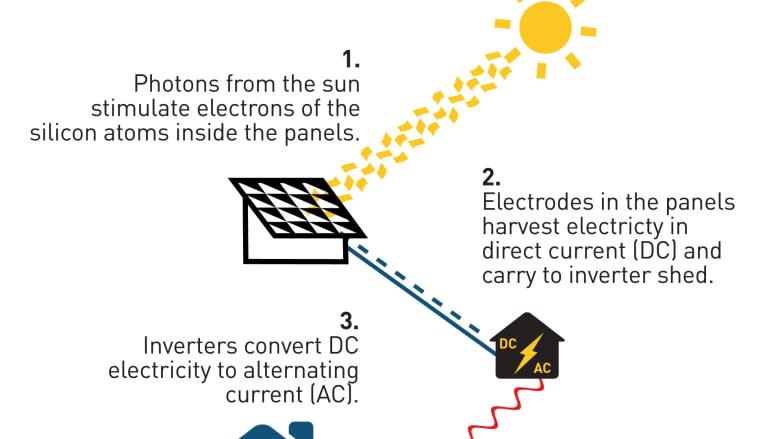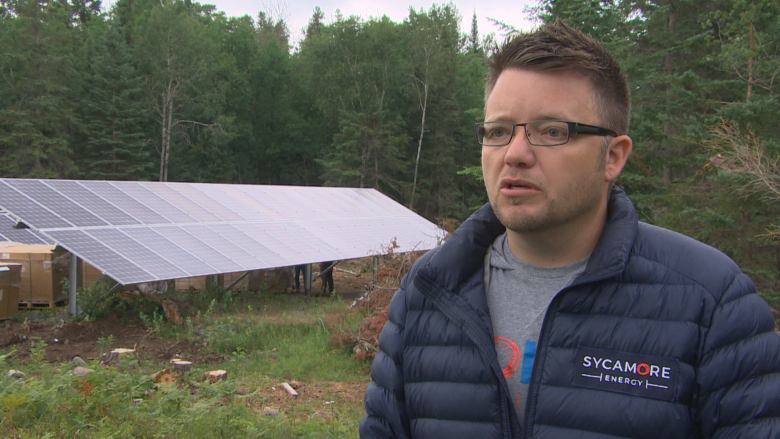Want to soak up the savings from solar? Here's what you should know
With electricity rates expected to rise sharply over the next few years, Manitobans face a choice: absorb the added energy costs or reduce the amount of power they pull from the grid.
Those who take the latter route can either reduce their electricity needs or produce their own energy. Both options will save money in the long term, but require upfront investments of time, energy — and yes, money.
Manitoba has an average of 1,293 hours of sunlight per year, making it the third-sunniest province in the country, according to Solar Panel Power Canada.
The overwhelming response to Manitoba Hydro's solar panel rebate program revealed a strong appetite for solar in Manitoba, but along with the initial costs comes a host of unfamiliar terms, numbers and technical questions that can prove intimidating.
To help make the learning curve a little less steep, CBC News has put together this guide to answer some common questions for those curious about how they can soak up the sun and lower their hydro bill.
How do solar panels work?
With no moving parts, the process by which photovoltaic panels turn sunlight into electricity can seem somewhat mysterious, but it's not magic.
Inside the cells of the panel is a layer of silicon. That's what gives the panel its dark colour.
Sunlight particles (photons) stimulate the electrons of the silicon atoms. Electrodes inside the cells harvest the electricity and pump it out in direct current (DC).
The DC from the panels is then pumped to an inverter, which converts it into alternating current (AC) power to be used by household appliances.
Manitoba Hydro has a bi-directional metering program, which means that when the output of the panels exceeds the energy needs of the home, that power is then sent back into the grid and credited to the homeowner's account.
What is a kilowatt-hour?
To figure out how big your solar panel array needs to be, you need to know how much energy you consume in a year. The kilowatt-hour is the most common billing unit for energy delivered to consumers.
To calculate kilowatt-hours, take the wattage of any household appliance, multiply that by how many hours you think it's used, and divide that by 1,000.
So if you use a 100-watt lightbulb for 10 hours, you've used 1 kWh of electricity. Conversely, a 10 kW system will produce 10,000 kWh of electricity per year.
Look at your electricity bill and add up how many kilowatt-hours of energy you consumed in the last year, divide that by the average amount of sunlight hours you get in a year — in Manitoba, that's 1,293 — and you have the size of the solar system you need to take care of all your electricity needs.
Patrick Bateman from the Canadian Solar Industries Association says most people aren't looking to solar for all of their energy needs, but rather to reduce the amount of energy they need to buy. A typical residential solar panel array will be around 5 kW, which will take care of roughly 50-75 per cent of an average household's electricity needs.
Is it worth it?
The ultimate question for someone looking to make the leap into solar is: How long will it take for the system to pay back the upfront costs of the installation?
Most customers get on board if they can make their money back between 7-11 years, Bateman said.
By 2020, the cost of buying and installing solar panels is expected to be 90 per cent lower than it was in 2010, Bateman said.
The cost of panels varies across the provinces. In Manitoba, the cost ranges from $2.50 to $3.75 per installed watt, according to Solar Panel Power Canada.
The payback period depends on the price of electricity purchased from the grid. According to Justin Phillips of Solar Manitoba, residential customers in this province pay roughly 8.1 or 8.2 cents per kWh — a price that is expected to rise.
By comparison, over the course of their lifespan, the levelized cost of electricity from a solar system is about four or five cents per kWh, Phillips said.
Although the efficiency of solar panels degrades over time, they typically last about 30 years. Maintenance over that time is relatively low — mainly clearing snow.
Various snow-clearing methods exist, from simply letting it melt, to throwing a Nerf ball at the panels, although most solar companies do not recommend the latter method.
Panels that are angled at 35 degrees will clear themselves of snow fairly quickly. If you need to clear them yourself, don't use a brush. Instead, use a squeegee fixed to a pole, to avoid scratching the panels.
What else can I do?
To get the most benefit out of a solar system, it helps to reduce the overall energy needs of your home.
To start, Randy Proven of Sun Certified Builders recommends sealing up any air leaks in the house, especially around windows and doors. This can lead to a build up of humidity in the house, which can cause condensation and mould. So to combat that, he also recommends installing a heat-recovery ventilator system, which helps to control the climate within the house.
Once that is done, Proven says homeowners can start adding insulation and buying more energy-efficient appliances.




